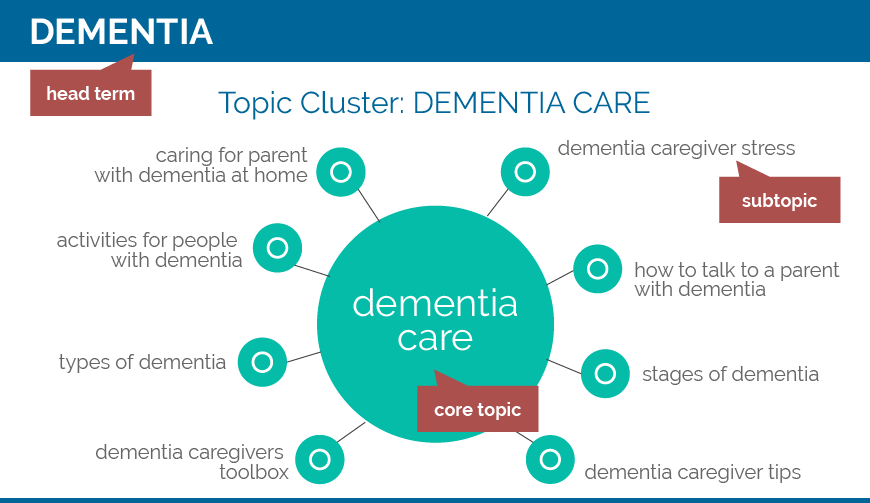SEO for Nonprofits: How to Get Your Crucial Content Found on the Internet
 If you've been told that your organization needs to improve its SEO, but you're not sure how to do it or even whether it needs to be done, here's what you need to know:
If you've been told that your organization needs to improve its SEO, but you're not sure how to do it or even whether it needs to be done, here's what you need to know:
- SEO has changed. Search engines are rewarding organizations that publish meaningful content.
- Search engine optimization is in fact the key to your audience finding your organization.
SEO today means validating your organization's choice of content with a little numeric research, and planning it in intuitive organizational unites, or topic clusters. In the process, you'll connect your content with your mission, and connect potential supporters with your work.
So even if you have some skepticism about the whole premise of SEO for nonprofits, there are good reasons to embrace its basic principles at your organization. Below, we'll share some advice on how to do that, based on years of experience working with nonprofits to improve their digital presence while publishing meaningful, authentic content.
SEO Basics
We all want our organizations' content to be found. Doing so starts with having a basic understanding of the way search algorithms work. Whether you're looking at Google, Facebook, YouTube, or beyond, search engines by and large rank content by looking at:
- Technical SEO
- Content SEO
- On-page SEO
- Off-page SEO
- Local SEO
In this blog, we're going to focus on #2, content SEO. That's because, while the algorithms that search engines use to rank and reward content change all the time, a good content strategy fulfills the requirements of search while at the same time advancing your organization's mission. So you'll never waste your organization's resources by creating and pursuing a good SEO content strategy.
SEO for nonprofits is about creating fresh, purposeful, meaningful content that answers the questions people have when they do online searches.
That content might include:
- Blog posts
- Pillar pages (long, authoritative web pages)
- Social media posts
- Ebooks
All of this content will be related to your mission, and will connect your audience and your potential supporters with your work.
Content Marketing
Content marketing is a relationship-based marketing strategy that enables nonprofits to focus on content, not promotion. It creates a relationship with an audience of potential and existing supporters that leads to trust. Your brand’s educational guidance—your content—builds trust and long-term growth for both you and your stakeholders.
Nonprofits that are successful at content marketing often start with a content mission statement.
A Mission Statement of Its Own
Content is so important that it needs a mission statement of its own. A content mission statement is different from the mission statement for your organization, but they're related. Here's a template that we provide use to create content mission statements with organizations:
Sample Content Mission Statement:
"Our organization's mission is ______. But when it comes to our content strategy, it's not about doing that. It's about the idea that everyone should know how to ______."
Most nonprofit marketers and leaders have a pretty clear sense of what their organization is trying to achieve overall. They also know that their organization needs to be publishing content, such as a blog.
But when it’s time to make assignments within the team or decide how to publish content, there can be confusion. What content should be prioritized? Where should it come from? Why is it important to publish content?
Several years ago, many organizations were publishing blogs just for the sake of publishing blogs. The blogs covered a broad array of topics. The advice was, “Publish as much as you can.” That was never a sustainable way of doing content marketing. And now Google is disincentivizing that.
So if your organization hasn't yet evolved beyond publishing for the sake of publishing, it's past time to plan and publish content that makes sense with your mission. Start by collaborating with your team to come up with a content mission statement that everybody can identify with, and share it across your organization:
Everyone should know how to ______.
Once you have that statement completed, all of your content should contribute to what it says. To take the next step of planning content to support your content mission, think in terms of topic clusters.
USING Topic Clusters TO PLAN CONTENT
A topic cluster approach to content marketing is especially relevant for nonprofits right now because of how search algorithms have changed. There have been more than 500 search algorithm changes to date—they're happening every day. And they change the way that our content is found online.
One big change that has happened over the past several years is that search is now about finding relevant material on big topics. The topic cluster model is an SEO strategy that focuses on topics as opposed to keywords to improve your site's architecture. It makes it easier for Google to discover related content and ultimately boost your search engine visibility.
A topic cluster is a group of content centered on one big topic that is an important part of your organization’s story. For example, an organization that provides care to seniors might have a topic cluster on dementia care. That topic cluster would have a pillar page at the center, covering the topic comprehensively. And linking inward to that pillar page would be a set of blogs or shorter web pages, videos, etc., each of them covering a subtopic of the bigger topic. Each subtopic has one keyword.
Here's what a topic cluster might look like in the planning stages:

Topic clusters are really good for being found online. But they're also really good for bringing sanity to your organization's marketing and communication strategy.
This is one way to take the idea of a topic cluster and quickly move into action with it. Identify a head term, and plan a pillar page at the center of the topic cluster. Plan a number of blogs, and link them inward to the pillar page.
You can have links between blogs. You can have links from the pillar page out to a particular blog, if it makes sense within the content. But the important thing for SEO is to make sure that each and every piece of smaller content has an inward link to that big authoritative piece of content, the pillar page.
How to Win at SEO
People have gotten into the habit of speaking their searches into a smart speaker or phone, as if it’s another person. So SEO these days is about visibility across topics rather than individual keywords. It's about answering people's questions. Nonprofits that are crushing it in the new world of SEO are:
- Building visibility across topics, rather than keywords
- Providing answers to questions
- Publishing long, authoritative pages (pillars)
- Arranging content into topic clusters with carefully planned internal links
So We Can Forget About Keywords?
We still have to do keyword research. While planning your topic clusters, someone at your organization will need to research how people are searching for information on the topics you're writing about. That's what keyword research is for.
The good news is that keyword research has gotten easier, and there are great tools available to do it. Here are just a few:
-
Google Ads Keyword Planner, which is provided when you open a Google Ads account
-
HubSpot's SEO tool, part of its all-in-one inbound marketing software
-
Keywords Everywhere, which you install as an API, and then it becomes part of your Google search page
SEO for nonprofits isn't about identifying a million search terms and churning out a new blog every day. Topic clusters provide nonprofits an excellent way to plan and generate content, because they're all about alignment. Here's how to get started:
- Write your content mission statement.
- Plan topic clusters to fulfill that mission (informed by keyword research)
- Write and publish the content you planned in step 2.
Once you have an SEO content strategy in place and are creating content in topic clusters, your content is aligned with your mission. And you're attracting potential supporters who are getting their questions answered with your crucial content.

